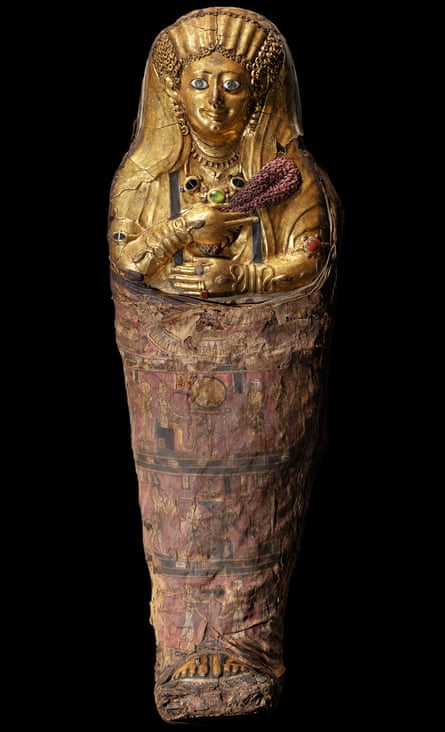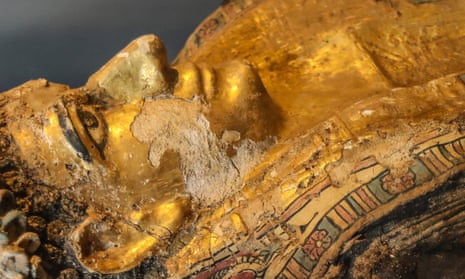Egyptian mummies, long an object of modern fascination, seem to link us with the ancient past by preserving distinct human form. But this was not the true reason for the intricate process, a major new British exhibition will argue.
The technique was instead a way of transforming dead dignitaries into a shape that the gods would accept. So, far from ensuring the survival of individual features, mummification aimed to make the occupant of a tomb match a divine formula.

“The idea that we inherited from the Victorians, that it was all done to keep a dead body just as it was in life, is not right,” said Campbell Price, a leading Egyptologist whose book will accompany the exhibition. “It is flawed, and we now believe it was intended to steer them towards divinity.”
Price and a team of curators will invite the public to examine the evidence themselves in the new year when Golden Mummies of Egypt comes to the newly refurbished Manchester Museum, which is reopening on 18 February.
The display, which will feature eight mummies and more than 100 other ancient objects, has already toured internationally during the museum’s closure and will be freshly staged for Manchester, to emphasise Price’s interpretation of the ancient purification, anointing and wrapping process.
“We have to imagine a time when, not only were there obviously no photographic images, but also very few mirrors, so people didn’t know what they looked like. The whole question of individual facial features was not so important,” said Price this weekend. “The ideas behind ancient portraiture and statuary were also very different as a result.”
The strength of the mistaken belief that Price now hopes to turn on its golden head is, he says, down to the colonial attitudes of early archaeologists, supported today by our heightened interest in personal appearance. “When people look at a face inside a mummy and say, ‘oh, they looked just like us’, it is just an illusion,” he said.
Price is an active member of the Egypt Exploration Society, which, though founded in 1882, now challenges the old colonial, celebratory approach. More up-to-date scholarly interpretations stem in part, Price said, from the work of Christina Riggs, whose book Treasured: How Tutankhamun Shaped a Century was published in paperback this month to coincide with the centenary of the discovery of the tomb of the best known pharaoh of them all.

In recognition of the spiritual significance of the mummies and other tomb contents, no CT scans nor facial recognition imagery will appear in the exhibition.
“All the more recent scanning harks back to the Edwardian archaeologist Flinders Petrie, who was interested in measuring the skulls inside the mummies to see if they matched British ideas of what a human should be. It is the rather sinister background to Egyptology we are moving away from.”
Displayed diary entries from eminent archaeologists of the past will also serve to reveal how priorities were once driven by Victorian values concerning race, gender, status and death.
